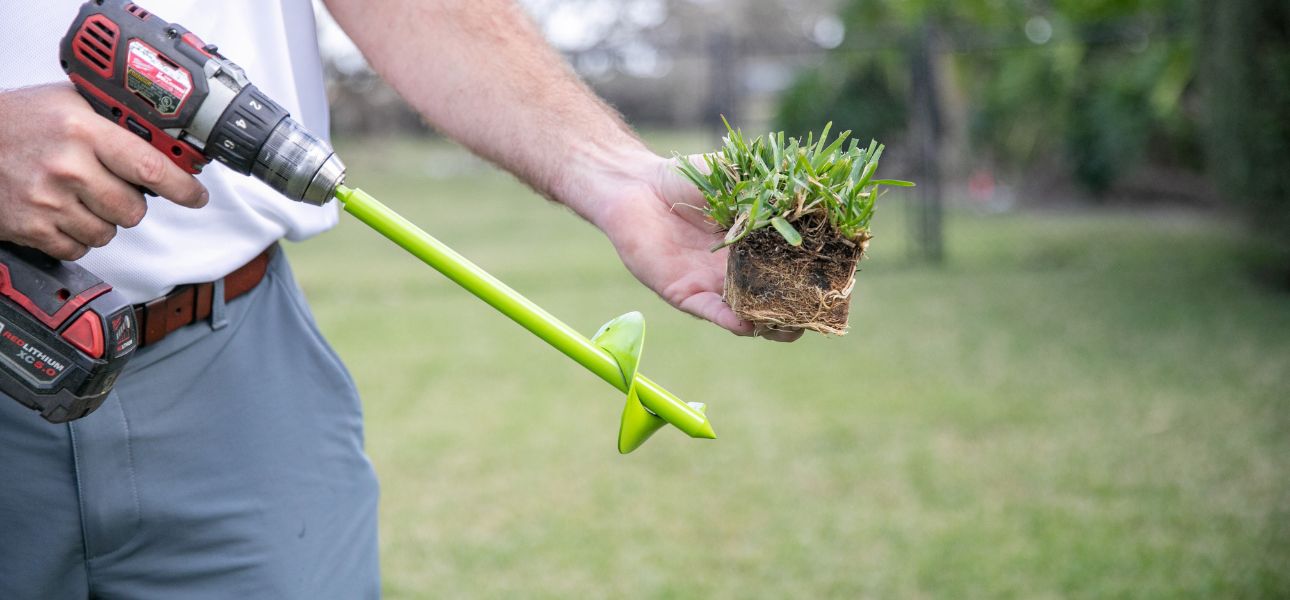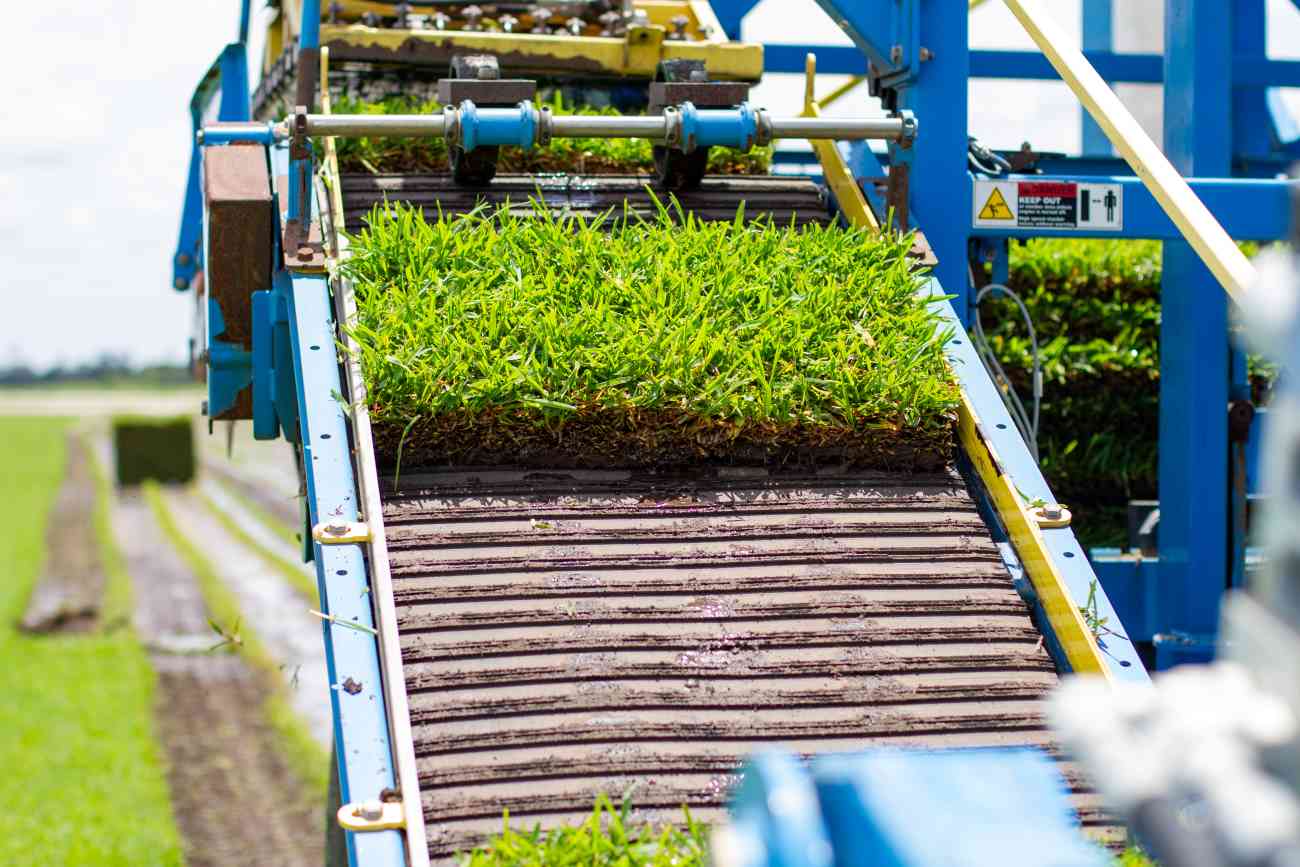Spring Lawn Care: Maintenance Checklist for a Greener Lawn

As the first signs of spring become more imminent—warmer days, a greener lawn, and the appearance of weeds—many homeowners are eager to restore their lawns after the wear and tear of the previous seasons.
Spring in Florida provides a great opportunity to rejuvenate your lawn and prepare it for the intense summer heat. The season aligns with the active growing season of warm-season grasses, like Bermuda, St. Augustine, and Zoysia, which makes it the perfect time to establish a new lawn or repair damaged areas with grass plugs. Its favorable conditions facilitate strong root development and vigorous blade growth, setting the stage for a healthy, vibrant lawn.

Spring Lawn Maintenance Checklist
The key to effective spring lawn care lies in managing crucial aspects of lawn maintenance, including mowing, watering, fertilization, weeding, and aerating. These tasks set the stage for a healthy lawn year-round. Here's your spring lawn care checklist to get you off to a greener start.
Start with a Clean Slate
Spring lawn care starts with cleaning up your yard—raking any fallen leaves, twigs, branches, dead grass, and general debris that may have accumulated over the winter. By clearing away debris, you can get a clear view of your lawn and identify areas that may have been damaged or infected with diseases, allowing you to address these issues early on. Raking your lawn in early spring also prepares it for new growth by removing excessive thatch buildup, which is a layer of organic debris thicker than half an inch.
Tune Up Your Lawn Mower
After being stored over winter, your gardening tools may need some maintenance to ensure they perform optimally for spring lawn care. Pay special attention to your lawn mower, as a difficult start-up may indicate it requires a tune-up. Change the oil and replace the spark plugs and air filter if necessary.
Additionally, sharpen the mower blades to ensure they cut cleanly rather than tearing the grass. Tearing can result in ragged brown tips and make the grass more vulnerable to pests and diseases.
Mow Your Lawn When Grass is Actively Growing
Wait until your grass starts actively growing again in spring before commencing your first mowing of the season. This is usually when you see consistent green growth, and the grass reaches about 3-4 inches in height. After the initial cut, aim to maintain a consistent mowing height throughout the spring. Expect to mow your lawn about once a week during the peak growing season to keep your grass at an optimal height, which is between 1-3 inches for most warm-season grasses. In addition to maintaining a neat appearance, regular mowing encourages dense green growth and the development of a strong root system.

Aerate if Necessary
Aerating is essential for addressing soil compaction, which naturally occurs over time due to soil settling and can be worsened in areas of your lawn with heavy traffic. Compacted soil restricts grass growth, leading to thin and patchy areas in your lawn.
You can use a grass plug tool to remove soil plugs from the ground, creating openings that allow water, air, and nutrients to penetrate the soil better and reach the roots. However, remember to aerate only when necessary, such as when you have a serious compact soil issue. While aerating can promote green growth in spring, it can also stimulate weed growth, such as crabgrass.
Assess Soil Health
Conducting a soil test in spring gives you insights into the present state of your soil, allowing you to make informed decisions in lawn maintenance. You can either use a soil test kit to determine pH levels—the alkalinity or acidity of your soil—or send samples to a testing laboratory for more detailed information. In addition to soil pH, it determines the nutrient makeup of your lawn, guiding you in selecting the right fertilizers and amendments to create optimal conditions based on your grass type.
Most warm-season grasses thrive in slightly acidic soils ranging from 5.8 to 7.0 pH. Common amendments include garden lime to raise the pH in highly acidic soils and compost or elemental sulfur to lower the pH in alkaline soils. Read here for a brief guide to soil testing when planting grass plugs.
Promote Green Growth with Grass Plugs
As you begin spring lawn maintenance, damage, sparse areas, or bare patches due to heavy traffic or neglect may become more apparent. Use this opportunity to repair your lawn by planting grass, thus promoting healthy, dense growth.
SodPods® grass plugs are mature plants with established root systems grown individually in trays, offering a convenient solution to restore your lawn. Using the SodPods® Power Planter Auger, dig holes in the soil at regular intervals and insert each plug. Water the new grass for the first two weeks after transplanting, ensuring the soil is consistently moist to facilitate successful establishment and growth.
Fertilize Your Soil
Fertilizing your lawn when planting grass plugs is crucial to support their establishment. NutriPod® is a lawn fertilizer designed for this purpose, delivering the nutrients essential as the new grass adapts to its new environment.
Each pod is worked into the soil and placed into the hole before planting the plugs, releasing nutrients as needed for up to 45 days. This controlled release ensures the grass receives nutrition as needed, reducing the risks of over-fertilizing or nutrient leaching associated with traditional fertilizers. After six to seven weeks, you can transition to a regular fertilization routine for the rest of the season. Make sure you use the right fertilizer at the right time to avoid these five common fertilizing mistakes.
Weeding
Weed control begins with applying pre-emergent herbicides, which target weeds before they can sprout and prevent germination. If you use pre-emergent herbicides, wait at least four weeks after treatment before aerating or planting grass plugs. This waiting period allows the chemicals to dissipate, reducing the risk of damaging your new lawn.
For persistent weeds like dandelions, chickweed, white clover, and wild violets that have already emerged, you can use a post-emergent selective herbicide or remove them manually to protect your desired vegetation.

Takeaway
Spring lawn maintenance is crucial in preparing your lawn for the warmer days ahead. While it may seem tempting to cut corners, neglecting proper spring lawn care can lead to future problems.
A well-maintained lawn is more resilient to environmental stressors and requires less effort to manage in the long run. By prioritizing comprehensive maintenance and care during the spring season, you set the foundation for a healthy, vibrant lawn that thrives throughout the year.
Support your spring lawn care efforts and facilitate vigorous grass growth by using SodPods® grass plugs. Buy grass plugs on our website today.

